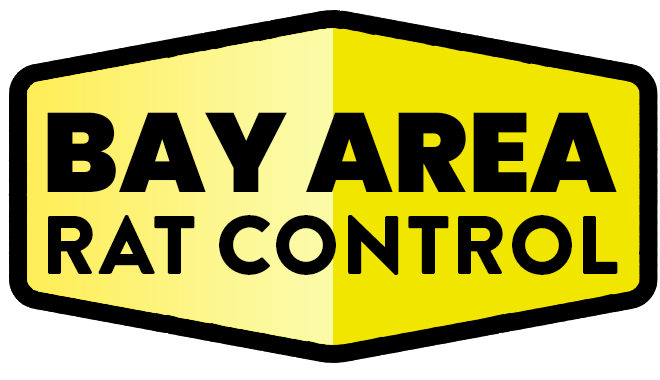Opening Thoughts
Despite best efforts, rat control strategies sometimes fail due to improper implementation, unforeseen challenges, or overlooked factors. Understanding common reasons for these failures can help refine your approach and achieve better results. This guide highlights lessons learned from failed rat control attempts, offering actionable insights to improve your pest management efforts.
Why Rat Control Efforts Fail
1. Insufficient Identification of Infestation
- Common Issue:
- Failing to locate all nesting sites or entry points.
- Lesson:
- Conduct a thorough inspection of the property, including hidden areas like attics, basements, and crawlspaces.
- Solution:
- Use advanced detection tools such as motion-sensor cameras or tracking powders.
2. Overlooking Prevention Measures
- Common Issue:
- Addressing the current infestation without implementing preventive strategies.
- Lesson:
- Rat control is incomplete without exclusion and sanitation measures.
- Solution:
- Seal entry points, improve waste management, and maintain cleanliness.
3. Using Ineffective Methods
- Common Issue:
- Relying on outdated or inappropriate traps, baits, or repellents.
- Lesson:
- Not all methods work equally well in every situation.
- Solution:
- Evaluate the severity of the infestation and tailor methods accordingly, such as using integrated pest management (IPM) for complex cases.
Lessons from Common Mistakes
1. Underestimating Rats’ Resilience
- Observation:
- Rats adapt quickly to traps and repellents, making some solutions less effective over time.
- Lesson:
- Regularly rotate methods and update strategies to counteract adaptation.
- Example:
- If rats avoid traditional snap traps, switch to electronic traps or bait stations.
2. Poor Placement of Traps and Baits
- Observation:
- Placing traps or bait in areas with low activity reduces effectiveness.
- Lesson:
- Understand rat behavior and place traps along walls, near droppings, or other high-traffic areas.
- Example:
- Use tracking powders to map rat pathways before setting traps.
3. Delayed Response
- Observation:
- Waiting too long to address a small infestation can allow it to escalate.
- Lesson:
- Early intervention is critical to prevent infestations from spreading.
- Example:
- Act immediately upon noticing droppings or gnaw marks.
Case Studies of Failed Rat Control Attempts
1. A Commercial Kitchen’s Struggle
- Scenario:
- A restaurant repeatedly experienced rat infestations despite monthly pest control visits.
- Failure Points:
- Ignored waste management issues, such as uncovered trash bins and food debris.
- Did not seal gaps around utility lines and kitchen vents.
- Outcome:
- Rats continued to return due to abundant food sources and easy access.
- Lesson:
- Comprehensive solutions require addressing both attractants and entry points.
2. Residential Property Infestation
- Scenario:
- A homeowner relied solely on ultrasonic repellents to deter rats.
- Failure Points:
- Did not combine repellents with trapping, exclusion, or sanitation.
- Outcome:
- Rats adapted to the sound, and the infestation persisted.
- Lesson:
- Ultrasonic devices are most effective when used alongside other control methods.
3. Warehouse Infestation
- Scenario:
- A storage facility experienced rat damage to inventory despite using poison baits.
- Failure Points:
- Baits were placed sporadically and not in tamper-resistant stations.
- Did not conduct follow-up inspections.
- Outcome:
- Rats continued to thrive, and decomposing carcasses created odors.
- Lesson:
- Effective baiting requires strategic placement, follow-up, and proper disposal protocols.
Key Takeaways for Successful Rat Control
1. Combine Multiple Methods
- Use a mix of traps, baits, exclusion, and sanitation for comprehensive control.
- Avoid relying on a single solution, as rats are highly adaptive.
2. Focus on Prevention
- Seal all entry points and eliminate food, water, and shelter sources.
- Implement long-term strategies like regular inspections and maintenance.
3. Monitor and Adjust
- Continuously evaluate the effectiveness of your methods and make adjustments as needed.
- Keep track of activity patterns using tools like motion detectors or digital traps.
Common Pitfalls to Avoid
- Ignoring Professional Help:
- Severe infestations often require the expertise of licensed pest control providers.
- Improper Disposal:
- Failing to remove carcasses or contaminated materials can attract more rats or cause health issues.
- Neglecting Tenant or Employee Education:
- For rental properties or workplaces, failing to involve residents or staff in prevention efforts reduces effectiveness.
Costs of Correcting Failed Efforts
Factors Influencing Costs
- Extent of infestation due to delayed action.
- Repair costs for damage caused by rats.
- Expenses for professional services to rectify previous failures.
Typical Costs
- Inspection and Exclusion: $500–$2,000 depending on property size.
- Comprehensive Treatments: $1,000–$3,000 for severe infestations.
- Damage Repairs: $200–$5,000 for structural or electrical repairs.
Final Thoughts
Learning from failed rat control attempts can significantly improve future outcomes. By addressing common mistakes, employing multiple methods, and focusing on long-term prevention, you can achieve effective and lasting results. For persistent or large-scale infestations, consulting with professional pest control providers ensures success while saving time and resources.
Relevant Links/Sources:
Integrated Pest Management Explained – EPA
Common Pest Control Mistakes – NPMA
Advanced Rodent Control Tips – PestWorld
